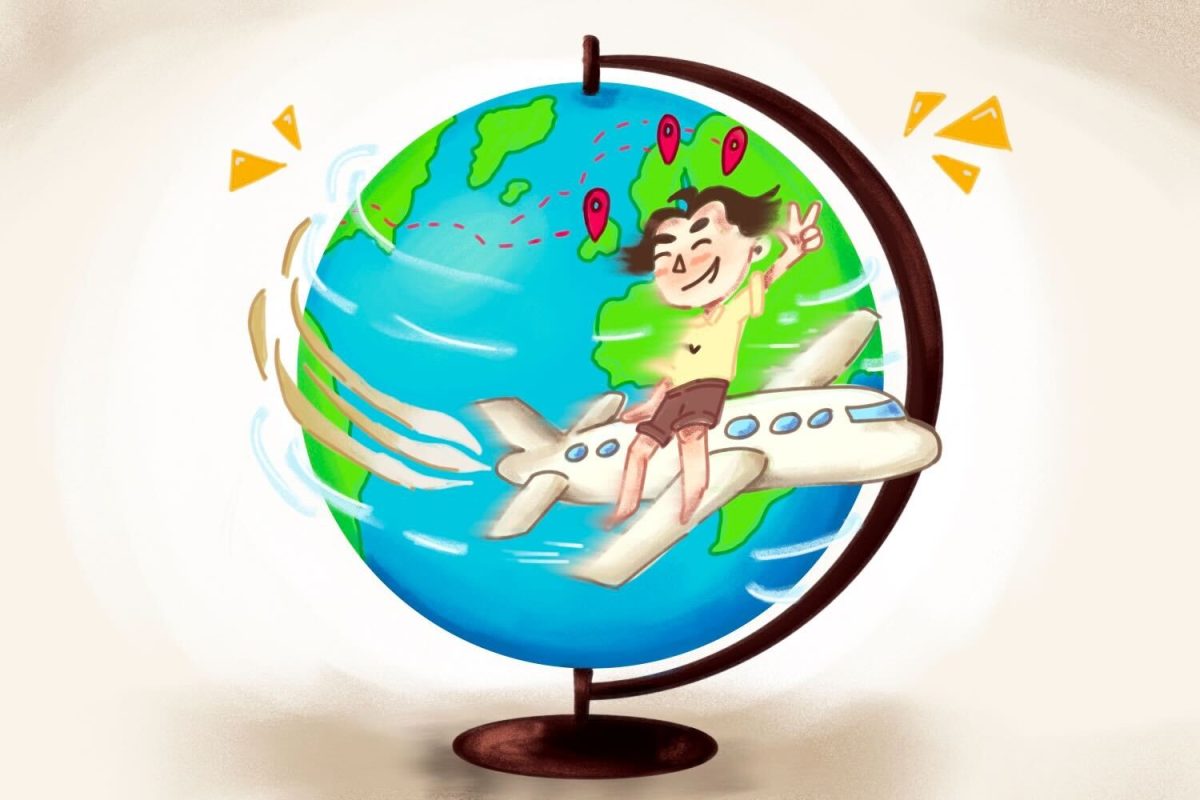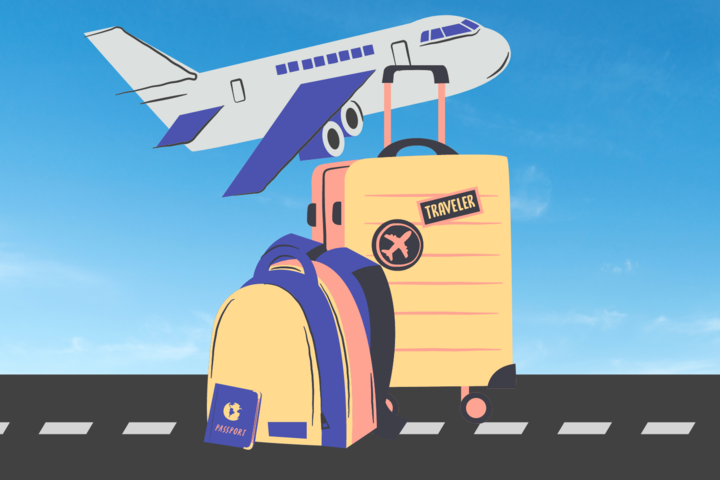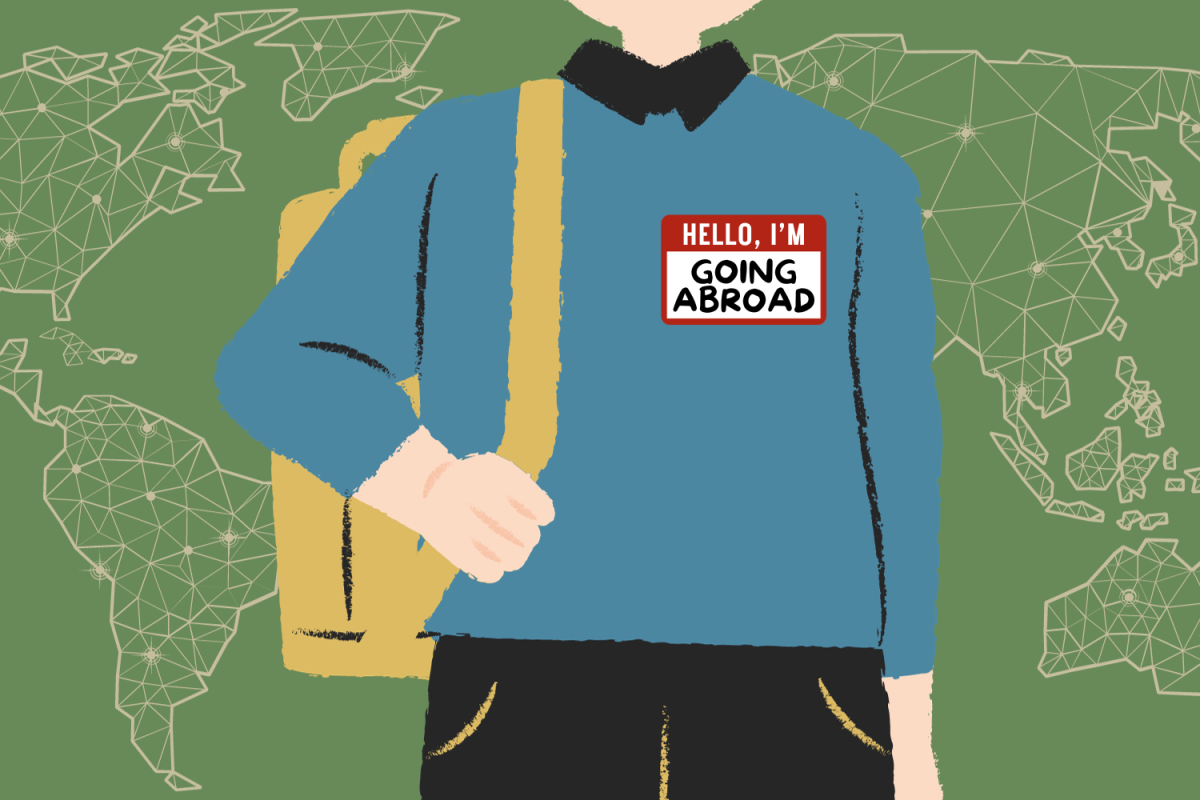So, you’ve received your visa after what feels like weeks of suspense. You’ve triple-checked that every document is sent correctly and confronted the irrational yet growing fear of your passport somehow getting lost in the mail. Any alumnus of a study abroad program will remember the stresses of preparation vividly. But what about the time spent overseas itself?
Before my semester abroad, I found myself too preoccupied with applications, visa guidelines and packing lists to even think about preparations for my time in Europe. For the new class of students preparing for their abroad program, here’s everything I wished I knew about how to have the best experience possible.
Travel
In many ways, it is far easier and more affordable to dart across Europe than it is to get from state to state here in the U.S. The airlines I used most were Ryanair and Vueling. While these airlines offer tickets at a fraction of the price you’d expect, be cautious. Any bag bigger than a standard under-the-seat carry-on will be met with numerous fees. Ryanair is very specific about the size of a carry-on: the bag must not exceed 55 cm x 40 cm x 20 cm in size. Flight attendants will measure your bag, and if it is too oversized or overstuffed, they won’t hesitate to charge you a significant fee at the gate — more expensive than checking a bag or paying for an additional carry-on upfront. All of the major budget European airlines (Ryanair, Vueling, Wizzair, Easyjet) have similar policies. However, their affordable tickets allowed me to visit more countries than I expected. Just make sure to play by their rules if you’re planning to fly with them. It’s better to pack too lightly than to get charged.
Another perk of living in Europe is the train system. However, some words of caution: train tickets get pricier for longer trips, and many railways are prone to delays and overcrowding. Trains also move much slower than air travel, so if you only have a few days for a trip, a train may not always be worth it. That said, there are plenty of excellent trains throughout the continent. I often used Omio to find reliable rides. The train is best for intra-country travel.
Many study abroad students think they need to be in a new country every weekend but don’t miss opportunities to explore your city. There is great value in deeply knowing your home, and extra travel can become exhausting. It’s important to consider this balance, as you don’t want to regret either not exploring your home city enough or not spending enough time seeing all of Europe. It’s impossible to see all of Europe in just one semester, so make sure to set realistic expectations.
Public Transportation
Whether in your homebase or on a weekend visit elsewhere, transportation within a city is important. Many European cities have excellent public transportation systems, whether it be a tram, bus or metro. Ticket machines often have an English translation and sell one-time or weekend pass tickets. For your city of residence, I suggest buying an extended pass.
One trick that I picked up was taking public transportation to and from airports. Unlike most of the U.S., nearly every airport I visited abroad had metro and train connections to the city. While these train rides are longer than taking a taxi or Uber, the lower price made it worth it.
Speaking of Uber, the app works in most Western European countries, but others require different apps. Freenow is popular in Spain, and it operates similarly to Uber. In Budapest, you need the Fótaxi app. Cabify and Bolt are other popular alternatives. I recommend downloading some of these before heading overseas in case you encounter difficulty with your cell service in a new country.
Also, be prepared for taxi driver scams. If you call a taxi without using an app, always make sure the meter is functioning and try to avoid price negotiations. If the meter is broken or something doesn’t feel right, get out of the car and look for another ride. As much as we try to blend in during our semesters abroad, U.S. students are prime targets for cons. Renting a bike for the day can be a lot of fun in cities with extensive bike paths. Donkey Republic is the most popular bike rental app.
Passports
Your passport will be crucial in Europe. While EU countries (including Norway, Iceland, and Switzerland) allow border-free travel, you’ll still need to have your passport with you at all times. (This includes when traveling within a country.) I recommend keeping it on your person while traveling and in a secure location when at home. It’s also smart to carry a paper copy if you plan to shop. Non-residents can get money back on purchases made in the EU in store or when leaving the country.
Money/Payment
Most countries in the EU use the Euro but not all of them. Bulgaria, the Czech Republic, Denmark, Hungary, Romania and Sweden, to name a few, each have their own currency. Having some local currency is helpful, but be aware that many ATMs, especially in airports, charge high fees for withdrawals. For short trips, using debit or credit cards will usually suffice.
That being said, American Express is not usually accepted anywhere in Europe. Mastercard, followed by Visa, are much safer bets. If possible, get some local currency from a U.S. exchange before flying to avoid airport ATM fees and ensure you have cash upon arrival. Some banks, like Bank of America, also have foreign partners that will waive fees in-country. It’s a good idea to notify your bank of your travel plans before leaving to prevent your cards from being flagged for suspicious activity.
Cultural Differences
Europe is incredibly diverse, with each country having its own language and culture. Even regions within countries have unique customs — and sometimes their own languages. For me though, most of Europe felt much more relaxed than the States. People are typically quieter, and time is rarely a concern. This can come to light in pleasant ways, like taking a long lunch or having a lighter academic workload, but it can also be frustrating. Professors may not check their emails as much as you expect, and you may catch yourself behind a group walking down the street at a shockingly slow pace. This can be bothersome, but learning and embracing the culture is a hugely rewarding part of the abroad experience.
Many cultural differences show up in restaurants. It may seem rude that a waiter rarely visits your table, but they will only come after requested, as they don’t want to rush you. While signaling a waiter can be intimidating, especially in a different language, if you don’t, you could be sitting there all night. Tipping is also not expected, as many restaurants include a service fee that goes to the wait staff.
In touristy cities, most people you encounter will likely speak some English, but as a visitor, it’s respectful to at least try speaking their language. It is a sign of respect for the local language and a way to embrace local customs.
As cultural differences vary by person, city and country, these are just a few things I learned from my experience. I encourage you to engage with the culture as much as possible even if it seems intimidating. Studying abroad is a wonderful experience that has changed my life in numerous ways. I hope these tips help you prepare for takeoff. Happy traveling!











